
Search
Category
Area
Season
-
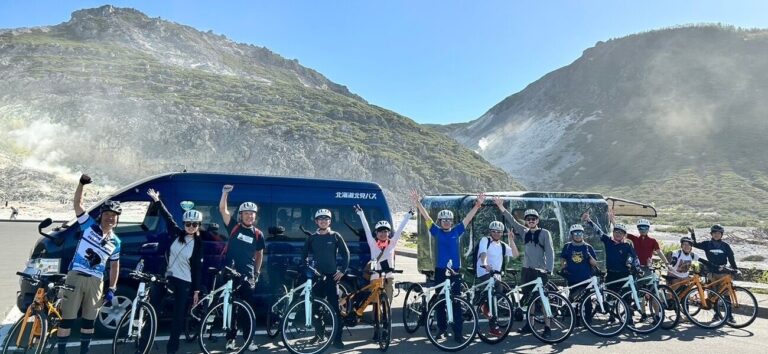
Beginners Adventure Tours
[Course A]
・Spectacular views! Zip downhill on an e-bike from Bihoro Pass overlooking a caldera lake (Lake Kussharo) in Akan-Mashu National Park (electric-assisted bicycle tour)
・Kayak along the Wakoto Peninsula, a place of boiling hot spring water, before coming ashore to experience the volcano in Oyakotsu Jigoku
・Eat a special homemade lunch using locally-produced ingredients on the shore of Lake Kussharo
・There is also an additional mini-cycling tour available, going by e-bike through agricultural, mountain, and fishing villages to Sunayu for a footbath in the hot springs
・Our final destination is Mt. Io, a geopark where you can feel the real pulse of Hokkaido's Tomoshiri
[Course B]
・Start from Omagari Lakeside Park, a field used by inmates of the former Abashiri Prison (the sunflower and cosmos flower gardens are at their best in August and September!)
・Take a leisurely ride on an e-bike along a bike path that uses the old Kushiro Line with Lake Abashiri at its side
・The coral grass with their bright red leaves that bloom in autumn at the brackish Lake Notoro are at their best in September
・Cycle by e-bike in the magnificent rural landscapes overlooking Cape Notoro
・Cross a sea relic lake! Kayak on Lake Notoro, Abashiri Quasi-National Park
・Cycle by e-bike to Cape Notoro Lighthouse while overlooking the Sea of Okhotsk where ice drifts and re-emerges!
・Have lunch at Connectrip, a hands-on facility at Lake Abashiri, where you can bake your own pizza! After stretching out the dough and topping it off with your favorite local ingredients, bake it in the stone oven for your very own stone-baked pizza! -
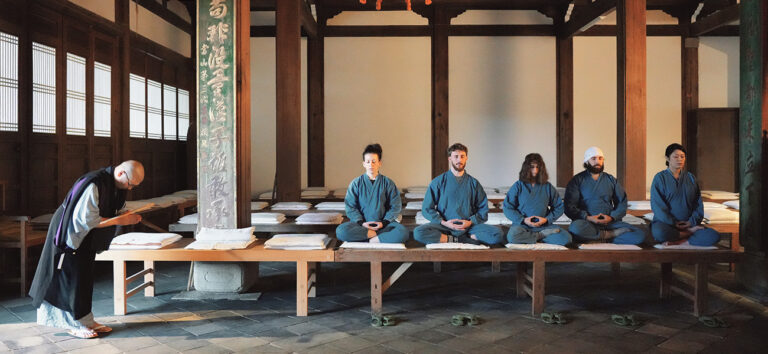
Ascetic Training, Senchado Tea Ceremony, and Fucha Cuisine at Manpukuji Temple
Manpukuji Temple was founded in 1661 by the Chinese monk Ingen Ryuki and is the head temple of the Obaku sect of Zen Buddhism. It is characterized by its Chinese-style architecture, in which its seven halls are arranged in the Ming Dynasty style.
The Daio Hoden Main Hall—the only one made of teak in Japan—the Dharma Lecture Hall, the Kaizando Founder’s Hall, and more, still stand as originally constructed. Highlights of the temple also include its Important Cultural Properties, which consist of twenty-three main buildings, corridors, plaques, and hanging couplets.
You can also experience the Chinese culture of the time through the temple's collection of Buddhist statues, framed inscriptions, paintings on sliding-door panels, and hanging scrolls by Buddhist artists from China.
Zen Master Ingen introduced a great number of things to Japan, many of which are taken for granted today. Such imports include kidney beans, watermelon, lotus root, sencha green tea, bamboo shoots (moso bamboo), chairs, tables, and manuscript paper.
Fucha cuisine, the Chinese version of Japanese Buddhist Shojin vegetarian cuisine, is beautifully presented and tastes divine. It is one of the highlights of the event that allows guests to truly experience Chinese culture.
There are Zen monks at Manpukuji who continue to practice asceticism to this day. These monks devote themselves to their practice through zazen meditation, Zen dialogue, religious services, alms begging, and other daily temple work at the Zen dojo located on the temple grounds. Visitors can deepen their understanding of the history and culture of Manpukuji from a digital guide available in seven languages: Japanese, English, French, Spanish, Korean, and Chinese (simplified and traditional). -
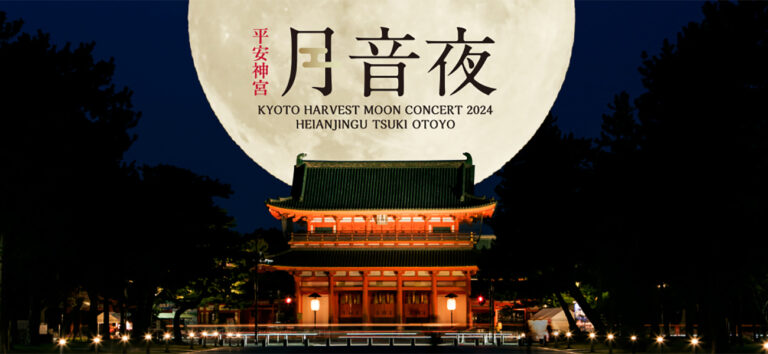
Heian Jingu Tsuki Otoyo: Kyoto Harvest Moon Concert 2024
The Mid-Autumn Festival is a celebration that originated in China to celebrate the fullest and brightest moon of the year. It is now celebrated with great enthusiasm in South Korea, Taiwan, Hong Kong, and many Southeast Asian countries. This year, the festival falls on August 15, as per the lunar calendar. Traditional "moon-viewing parties" will be hosted this October in the modern setting of Kyoto’s Heian-jingu Shrine. The Daigokuden (outer hall of worship) will be lit up in the background for special live performances by talented musicians to embody the elegant and romantic time that is mid-autumn.
■ Dates: October 12 (Sat.) - October 14 (Mon.)
■ Admission: All seats reserved, advance purchase 8,000 yen / 25,000 yen with meals included (scheduled/admission date designated)
■ Performer: October 12 (Sat.): Hiromi Go October 12 (Sun.): Erika Ikuta October 14 (Mon.): NEO PIANO
[Special Gift for Visitors: Original Japanese Sweets]
This tradition of admiring the moon originates in China. There, they serve round mooncakes in the shape of the full moon. The Tsuki Otoyo Kyoto Harvest Moon Concert represents East Asia's shared culture of affection for the moon. Original Japanese sweets will be handed out to all who join in on the festivities.
[Plan with Dinner]
Enjoy an exquisite dinner at Rokusei, a restaurant located near Heian-jingu Shrine. Savor their Kyoto-style kaiseki cuisine which embodies the culinary culture of Kyoto cultivated over its long history.
Time: 5:00 p.m.–6:30 p.m. each day (concert begins at 7:00 p.m.)
Details: Kyoto-style kaiseki cuisine -
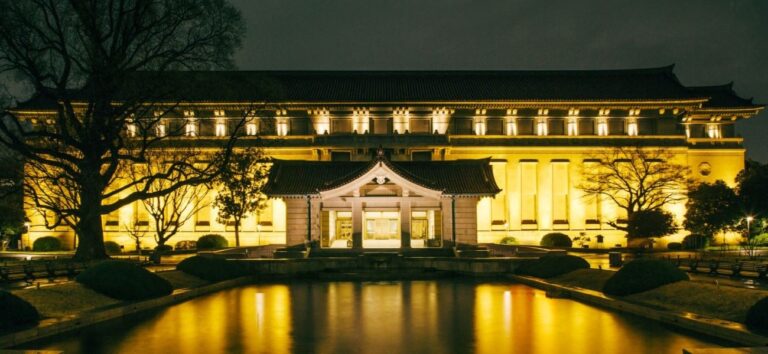
Night Festival at the Tokyo National Museum
The Tokyo National Museum has the longest history of any museum in Japan. It's collection includes numerous masterpieces exemplifying Japanese art, including paintings, swords, calligraphy, and kimonos. This summer, the museum will be holding a special exhibition to showcase valuable cultural assets, such as Buddhist statues and paintings inherited from Jingoji Temple in Kyoto.
In addition to these precious tangible cultural properties, guests can experience the Japanese summer traditions of matsuri festivals and temple fairs.
The temple fair atmosphere cleverly recreated on the museum grounds will greet guests as they enter through the Kuromon "Black Gate" instead of the regular entrance. Once inside, guests can enjoy traditional Japanese festival sweets, such as cotton candy and shaved ice, and take part in popular festival activities and items, including target practice, ring toss, wind chimes, daruma dolls, and masks.
A variety of festival foods will also be offered, from takoyaki octopus dumplings and yakisoba noodles to Japanese beer, chocolate bananas, and other such festival treats. -
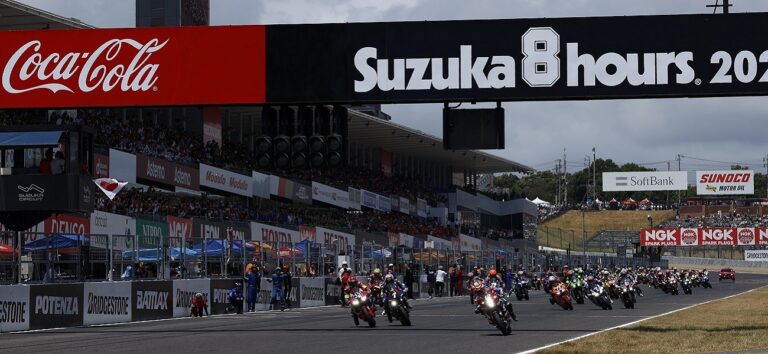
Tour of the Suzuka 8 Hours Road Race with VIP Activities
The Suzuka 8 Hours race will take place on July 20 and 21. There are two types of exclusive tours on offer for those wanting to enjoy the race.
The Hospitality Package spans both race days and allows guests to watch the race up close and in person in an exclusive mobile showroom set up directly beside the course for an exhilarating and immersive experience. The local restaurant Kakiya will be offering sukiyaki with Matsusaka beef for this event, and there will be opportunities to meet the riders and coaches of Ducati Team Kagayama, one of the teams competing in the Suzuka 8 Hours race.
The Touring Package is a limited-number set package which includes everything from the Hospitality Package, as well as a few exclusive extras. On July 18 and 19, participants will travel by motorcycle to Iga Ueno, Ise Shrine, and other tourist spots around Mie Prefecture. On July 20, participants will ride on the actual race course of Suzuka 8 Hours. Finally, on July 21, participants will get an exclusive look at the race behind the scenes. -
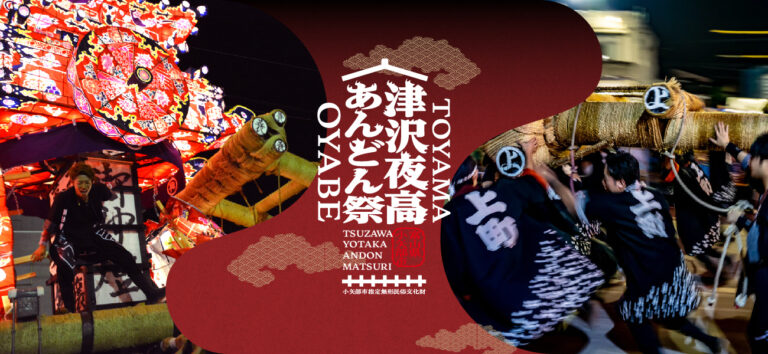
Tsuzawa Yotaka Andon Festival: Special spectator seating with delicious festive food as impressive lanterns clash
Held every year on the first Friday and Saturday nights of June, the Tsuzawa Yotaka Andon Festival is a historical festival that originated in the Edo period (1603–1867). During this event, illuminated lantern floats assembled from dengaku lanterns, dashi floats, and hanging lanterns crafted with bamboo and washi paper are paraded through the streets at night to the sound of taiko drums and cheering. The main attraction of the festival is the Toyama fighting lantern floats: giant lanterns that are 7 meters high and 12 meters long. The lanterns crash fiercely into one another, and the goal is to break the opponents floats.
Special up-close spectator seating has been made available to watch this powerful clash of lanterns. This unique experience also comes with a meal and beverages, including local sake. The second floor of the Oyabe Tsuzawa Andon Fureai Hall, located near where the clash is set to take place, will be decorated as a dedicated space for this two-day event, allowing visitors to take in the view at their leisure.
Visitors can also tour the town with an interpreter and guide in addition to the lantern float parade. Experience the area firsthand as you learn about the festival and the local community.
Workshops will be held to create lantern art by reusing parts of the lantern floats that have broken off in the collisions. These lantern floats were created especially for the festival, and they are filled with the passion of its participants. While the broken pieces originally would have been incinerated, they are instead recycled for the workshop where they will be transformed into one-of-a-kind artworks that you can take home with you. -
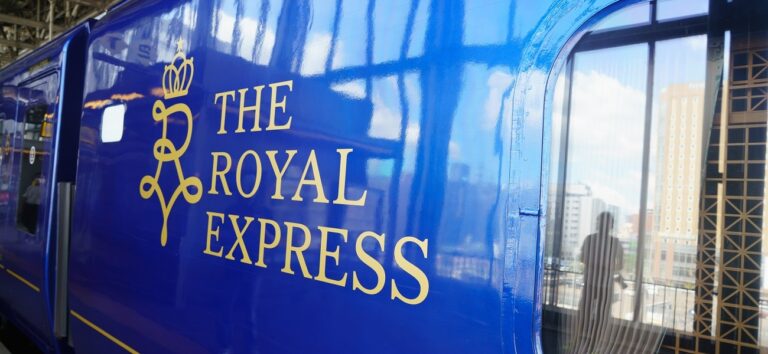
THE ROYAL EXPRESS ~HOKKAIDO CRUISE TRAIN~
THE ROYAL EXPRESS is a luxury train designed with a combination of traditional Japanese woodworking techniques with other distinct features. The train and a private bus will take you on a tour through the rich nature of Hokkaido. Along the way, you can relish in a culinary course prepared by a Hokkaido chef as you listen to a live violin accompaniment, or you can go on an excursion to experience some of Hokkaido's nature, farms, and ranches.
The three options are:
HOKKAIDO CRUISE TRAIN: A lavish combination of Hokkaido’s nature, food, and culture
HOKKAIDO 5th ANNIVERSARY CRUISE: A combination of sightseeing in the Lake Shikotsu area and canoeing on the headwaters of the Kushiro River
HOKKAIDO: JOURNEY TO JAPAN’S NORTHERNMOST POINT: A trip to Wakkanai, the northernmost point of Japan -

Global Tokyo National Museum Project —DINO-A-LIVE: Dinosaur Grand Night Parade at the Tokyo National Museum—
The Tokyo National Museum houses the finest of Japanese craftsmanship, including the Night Parade of One Hundred Demons picture scroll that served as the inspiration for this event.
The realistic DINO-A-LIVE dinosaurs, too, are a testament to the spirit of Japanese craftsmanship, and will parade around the Tokyo National Museum this autumn. The premier craftmanship and lifelike movement of these dinos have garnered attention from around the world and are bound to impress.
Event-themed merchandise and food services will be available at the venue for an even more fun-filled night. -

SAMURAI Drive - A Journey Tracing the Beauty and Honor of the Famous Warring States Families: Uesugi and Date
This tour takes participants back to (1) the world as seen by the warlords of the Uesugi and Date families, who ruled Yonezawa during the Warring States period, and (2) the world as seen by Uesugi Yozan, the lord of the Yonezawa domain (whom US President J.F. Kennedy called "the most respected politician in Japan during the Edo Period").
(1) See the Important Cultural Properties and National Treasures of the Uesugi family, then travel back in time to the Warring States Period with a fireworks display unlike anything you've ever seen in Japan.
(2) Go on a backyard tour of the traditional food and textile cultures that flourished in the Edo Period by visiting Toko, a sake brewery that has been in business for the past 426 years, and Nitta, a Yonezawa textile company established 150 years ago.
(3) Experience cuisine and hot springs in a way that fuses Japanese traditions with global values. -
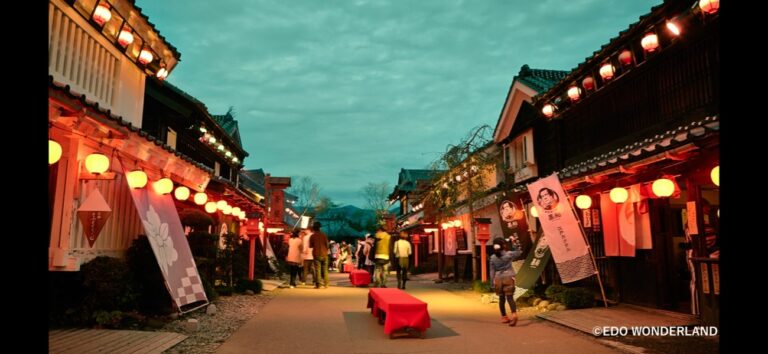
Experience the Edo period at night with Edo Wonder Night
Edo Wonderland Nikko Edomura is a cultural theme park in Nikko, Tochigi Prefecture that recreates Japanese history, traditions, and culture in the Edo period, a period of cultural flourishing that began almost 400 years ago.
The vast 16-hectare museum grounds faithfully recreate the bustling streets of Edo merchant districts, samurai residences, and post-station towns, with cultural experiences, theatrical performances, events, and exhibition halls that transport guests back in time and allow them to experience the historical past.
The fun at Edo Wonderland Nikko Edomura does not stop when the sun goes down. The limited nighttime event "Edo Wonder Night" creates a magical atmosphere with town-wide illuminations, traditional cultural experiences, Edo cuisine, and a ninja action show that you will not want to miss.
